Category: Education and Youth Development
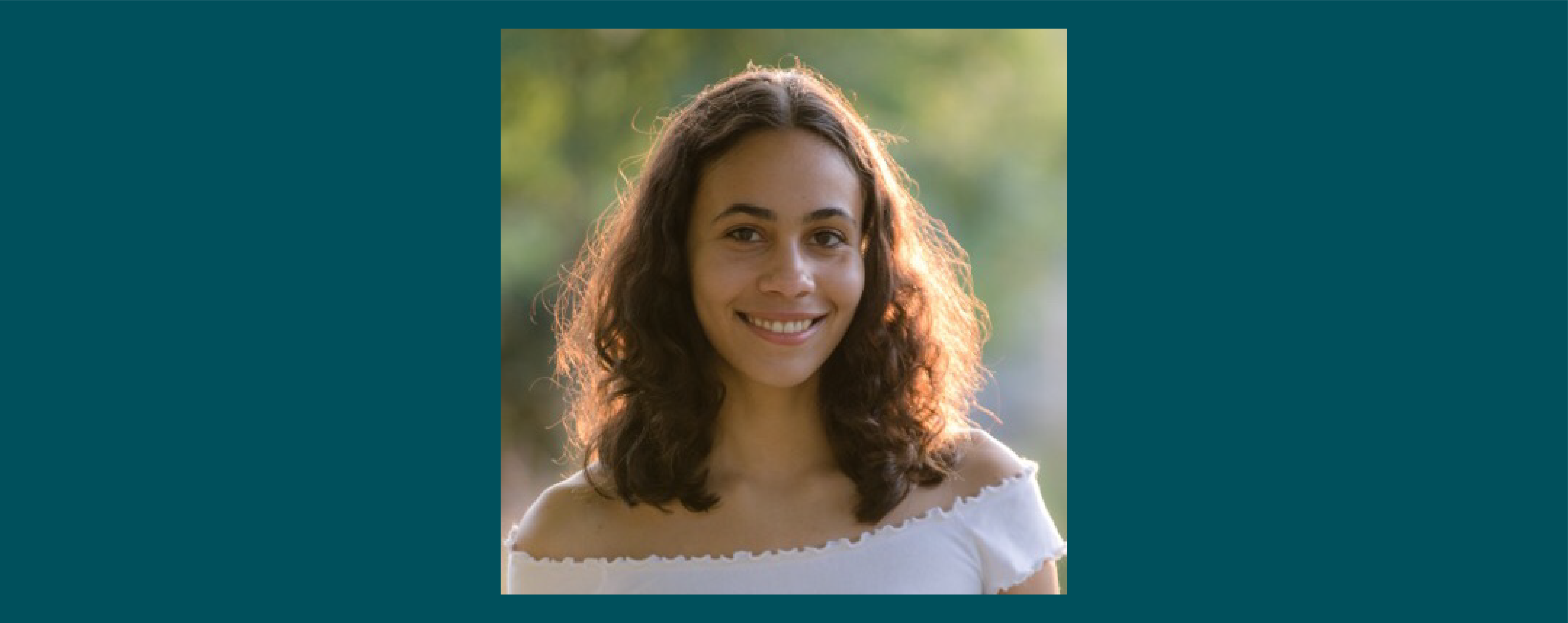
Revisiting Milwaukee: Learning About My Hometown Through Service
By Elyse Cornwall, ’22
The first time I drove to Moody Park, I suppressed my nerves about driving into an area known for reckless driving. I reminded myself that these feelings came from racist assumptions about a community I had never meaningfully interacted with. Still, I stopped at green lights as oncoming cars ran the red, and rushed down main streets to keep other cars from skirting past me. Thus, I arrived at Moody Park feeling simultaneously afraid and embarrassed, and that was when the youth participants arrived. My primary responsibilities were event planning and coordinating with other volunteers, but I realized that my work behind the scenes could not be effective until I immersed myself in the community I served. When I ate meals, played games, and shared stories at Moody Park, a new side of my service experience emerged.
My weekly discussions with youth living near Moody Park covered topics like drugs and alcohol, police relations, and reckless driving. The group’s familiarity with dangerous situations seemed to contradict their charisma and friendliness. I helped host the Zeidler Center’s listening circle events, which allowed youth and police officers from the area to talk with each other in small groups. The youth took turns responding to prompts such as, “Describe an experience you have had with a police officer,” sharing their experiences rather than debating or convincing anyone. The Zeidler Center hosts listening circles like these throughout the Greater Milwaukee Area, featuring topics like political polarization, race relations, and education. These events are based on the organization’s belief that open, respectful dialogue promotes positive change. I watched as the listening circles at Moody Park shifted from short responses to candid conversation. By the end of the discussions, youth and officers were sharing accounts of their days and stories of hardship, relating to one another on a personal level.
As an outsider in this community, I felt hesitant to expand beyond my role as a staff member, but eventually gave in with the encouragement of the youth and other staff. I shared my own experiences, admitted the gaps in my knowledge of Milwaukee, and put myself in a position to learn from the youth I had aimed to serve. Not only did I feel more connected to a community that I hadn’t interacted with before, but I also felt a stronger obligation towards my city. I found that my view of civic duty and participation changed once I got to know the people with whom I was sharing a community.
By the end of the summer, I started to see my service experience in connection to my parents’ work in Milwaukee as public servants. Usually, I thought of my parents as lawyers who happened to work for the state and county. Though they had expressed pride in serving those who relied upon public legal assistance, I never thought of their occupations as reflections of their character. As a court commissioner, my father has the opportunity to combat the racial bias that targets people with his racial identity in most courtrooms. Like my father, the staff and volunteers at the Zeidler Center prioritize listening to and learning from the communities they serve.
I am glad to have developed this new civic understanding in the context of Milwaukee, through the service I have done. When I returned to Stanford in the fall, I brought with me a willingness not only to serve, but also to know the people within my community who are most targeted and misrepresented.

Elyse Cornwall, ’22, studies computer science at Stanford. Originally from Milwaukee, WI, Elyse completed a Cardinal Quarter in her hometown the summer after her freshman year, working to support the Zeidler Center, an organization that fosters civil dialogue across perspectives. At Stanford, Elyse is a CS106A section leader; a team leader for Ideas Out Loud, Stanford’s TEDx club; and a member of the Delta Delta Delta Sorority.
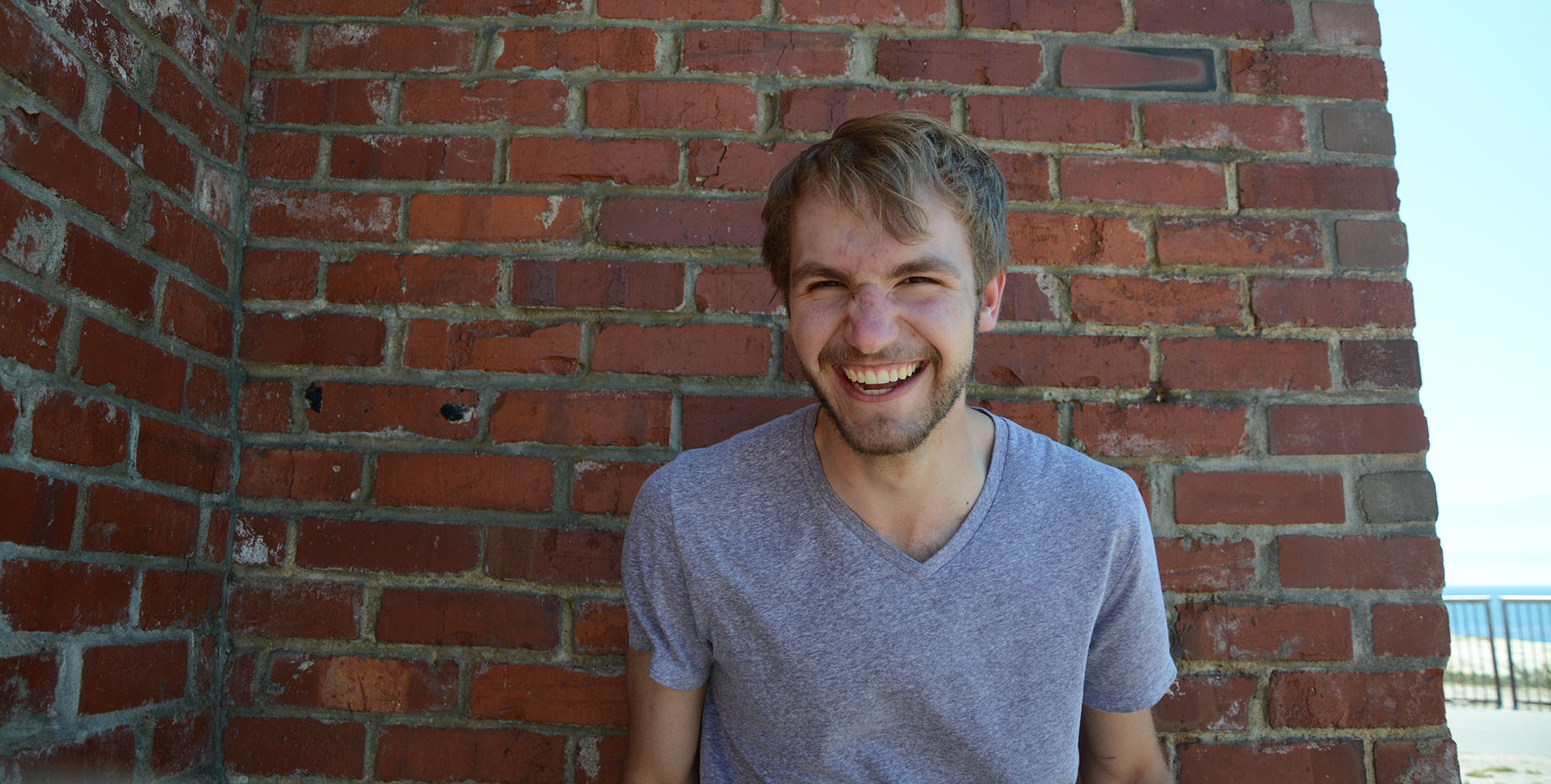
My Most Important Lesson
By Thomas Allen Wehner, ’20, MS ’21
When I first started as a tutor with the High School Support Initiative (HSSI) freshman year, I didn’t realize the depth of the program and how much it would mean to me. I signed up after getting an email about the program because I liked tutoring and it sounded like a good cause. I joined HSSI as a tutor going out to my school site once a week. I was barely aware of the complexities of the program, the intricacies of ethical service, and the depth of how my identities interacted with the complex histories and systems at play in the education system. I had a lot to learn.
At the end of freshman year, I became an HSSI fellow and spent the next three years working with and learning from the incredible team. As a fellow, I was part of the program staff, with expanded responsibilities to support the tutors and program. As a team, we worked with Stanford students, analyzed feedback, hosted workshops, discussed articles and program changes, filled in spreadsheets, tracked attendance, and went out every week to maintain our anchor in the most important work by tutoring high school students.
This experience sparked my interest in education, organizational behavior, and nonprofit work. I had joined HSSI because of its focus on working with high school youth, but working as an HSSI fellow helped me discover that I was even more interested in learning how to develop the organization and volunteers to better serve and collaborate with youth and community partners. This insight helped guide my future plans, highlighted what talents I have to use in collaboration with others to build a better world, and revealed what skills I still need to develop.
Every experience with HSSI pushed me forward as a person – whether building facilitation skills with volunteers, learning the power and shortcomings of the Principles of Ethical and Effective Service, or better understanding how to be an ally as a person of privilege in the fight for educational equity.
The time I spent with the HSSI team added so many dimensions to my Stanford experience, and I consider it to be the most important part of my education here. Beyond fostering a set of technical skills, this experience helped me learn about myself and understand my journey to being a better friend, ally, coworker, volunteer, leader, and person. I am forever grateful to Sophia Kim, our wonderful program director and mentor, and the rest of the HSSI family for this incredible experience.

Originally from Highland Park, IL, Thomas Allen Wehner, ’20, MS ’21, studies electrical engineering at Stanford. In addition to serving with the High School Support Initiative (HSSI) for all four years of his undergraduate career, he has been involved in the campus theater scene, most recently as the executive producer of Ram’s Head.
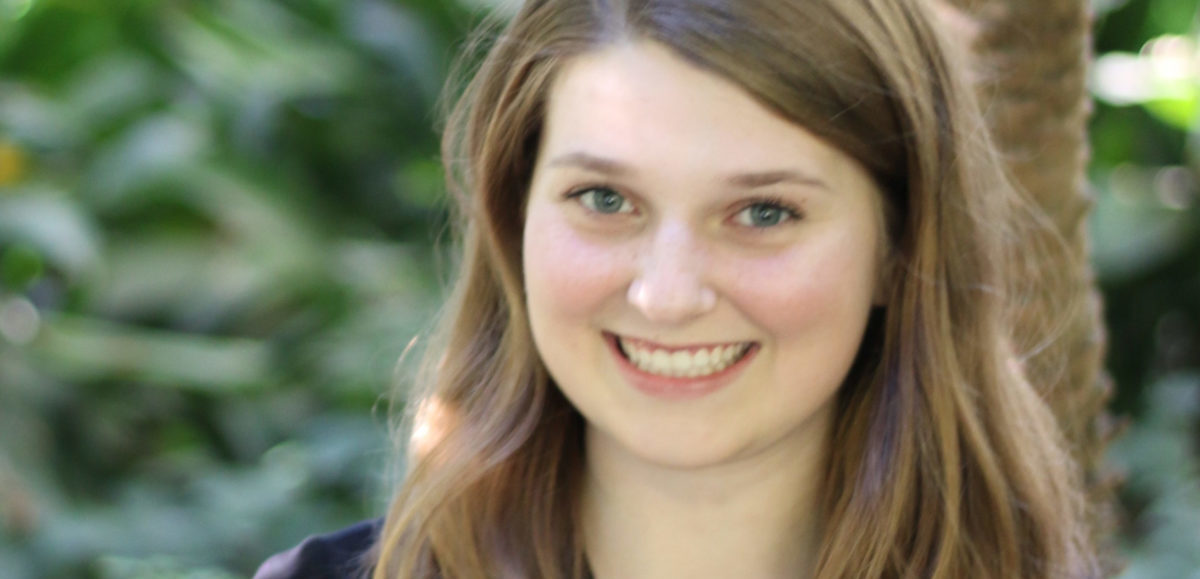
The Value and Validity of Nontraditional Education Paths
By Tess Stewart, ’21
Last summer, I had the pleasure of working as an admissions and recruitment intern at Year Up, an education nonprofit that aims to take young adults ages 18 to 24 from minimum-wage jobs to well-paying careers in just one year. Year Up’s program is split into two phases. The first phase, learning and development, focuses on teaching these young professionals the necessary skills to succeed in the modern workforce. During the next six months, students are placed at an internship to gain real-world working experience.
As part of the admissions and recruitment team, I helped build the next class of Year Up students. By far, my favorite part of the job was conducting admissions interviews. I would spend about an hour talking individually with young adults from all walks of life about their experiences, passions, and goals. I was exposed to such a breadth of wonderful people who were motivated to kickstart their professional careers.
Additionally, this summer was especially unique because it opened my eyes to the variety of paths to success that exist. I am extremely lucky to attend an institution such as Stanford, but my internship helped me realize that getting a college degree is by no means the only way to achieve one’s goals. Through my work at Year Up, I was able to work with incredibly smart young adults who were in the process of following an untraditional path toward their goals. Whether deciding to restart their education after having their second child or deciding that a string of minimum-wage jobs just was not cutting it anymore, these young adults approached Year Up with the passion and drive to reach their dream job.
As an intern, I was able to witness the immense impact Year Up has on the lives of its students. Not only does Year Up provide students with a stable support system, career advice, and tangible tools to use in the workforce, but this organization also teaches students to have confidence in themselves and their value in the professional world. Furthermore, it forced me to reflect on my own time at Stanford. I began thinking critically about my own learning, questioning how successfully I was utilizing my time at Stanford to reach my goals. Working at Year Up greatly broadened my view about what it means to be a young professional and how we can support individuals who may have untraditional paths, so that, regardless of background, students can reach their full potential.

Tess Stewart, ’21, is originally from Los Angeles, CA, and studies symbolic systems at Stanford. In the summer of 2019, Tess completed a Cardinal Quarter as part of the admissions and recruitment team at Year Up, a year-long program that supports young professionals in pursuit of meaningful and sustainable careers.
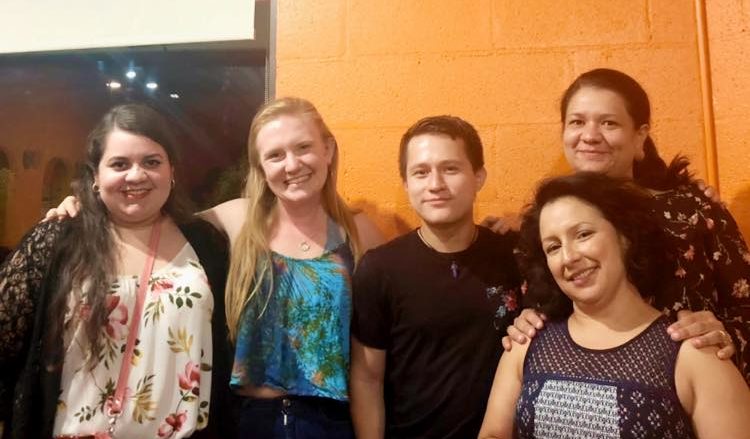
Listen Deeply and Act Strategically: Organizing for More Equitable Education in Colorado
By Tavia Teitler, ’21
I could see the majestic Colorado mountains in my rearview mirror and feel butterflies in my stomach as I pulled into the parking lot of Sister Carmen Community Center. It was my first day of work at Engaged Latino Parents Advancing Student Outcomes (ELPASO), and it only took about 10 minutes of the weekly Monday morning staff meeting for me to realize that I would be working for a truly incredible organization.
The ELPASO community organizers and school-readiness coordinators introduced themselves to me and immediately launched into a discussion about ways to effectively engage with their community in the current climate of fear about immigration. ELPASO’s then executive director, Tere Garcia, then spoke passionately about her new idea for a teddy bear clinic that could help raise awareness about the importance of preventative medical care. As I listened, I was blown away by the passion, energy, and power in the room. My sense of awe and inspiration only grew throughout the summer as I became more familiar with the women of ELPASO and the work they do.
I am majoring in comparative studies in race and ethnicity with a concentration in inequality in education, so a lot of my time at Stanford has been spent learning about theories of education inequity. However, I lacked intimate firsthand knowledge of what people were doing in their communities to tackle these issues. In other words, I didn’t know what many of these concepts and theories looked like on the ground.
ELPASO is a community organization based in Boulder, Colorado, that works to help close the opportunity and achievement gap between White and Latinx students in the area through effective parent engagement. By learning about ELPASO’s parent training and parent advocacy groups, I came to appreciate the power of informed, organized parents, and gained a deeper understanding of all of the factors that go into fighting for more equitable education. The theories I had learned about in the classroom came to life for me as I tagged along as the coordinators went door to door to recruit parents for their training program and listened as parents described their experiences raising their children in this country. I attended meetings with the parent advocacy group to ask school district officials to revise their translator policies and hire bilingual school secretaries. I also took notes as the women held a meeting with the director of the local free clinic to voice concerns about how they and the parents they work with were being treated. Later in the summer, I helped prepare materials for a workshop at a local trailer park on how to fill out money orders properly after the residents were robbed of a month’s rent by their landlord.
I was inspired by the organizers’ and coordinators’ ability to respond to more immediate needs in their community while still maintaining focus on their long-term mission. I learned lessons in the field from the women of ELPASO that both challenged and informed the lessons I’ve learned in the classroom. Most importantly, the women of ELPASO showed me what it means to listen deeply and act strategically. I know I will bring this knowledge back to the classroom, and out into the world after graduation.
This summer helped me realize that community organizing and nonprofit work, especially in relation to issues of education access and equity, is the kind of work I want to do in the future. Though I still need to spend time reflecting on my place as a White Stanford student in organizations that serve historically marginalized communities, I now know that I am committed to learning, just as I learned from my co-workers at ELPASO.

Originally from Carbondale, Colorado, Tavia Teitler, ’21, is majoring in comparative studies in race and ethnicity and psychology. Her interest in education equity led her to return to her home state for a Cardinal Quarter fellowship with Engaged Latino Parents Advancing Student Outcomes (ELPASO) during the summer of 2019. Tavia also serves as a community engaged learning coordinator at the Haas Center for Public Service and as co-chair of Ballet Folklórico de Stanford, a Mexican folk dance group on campus.
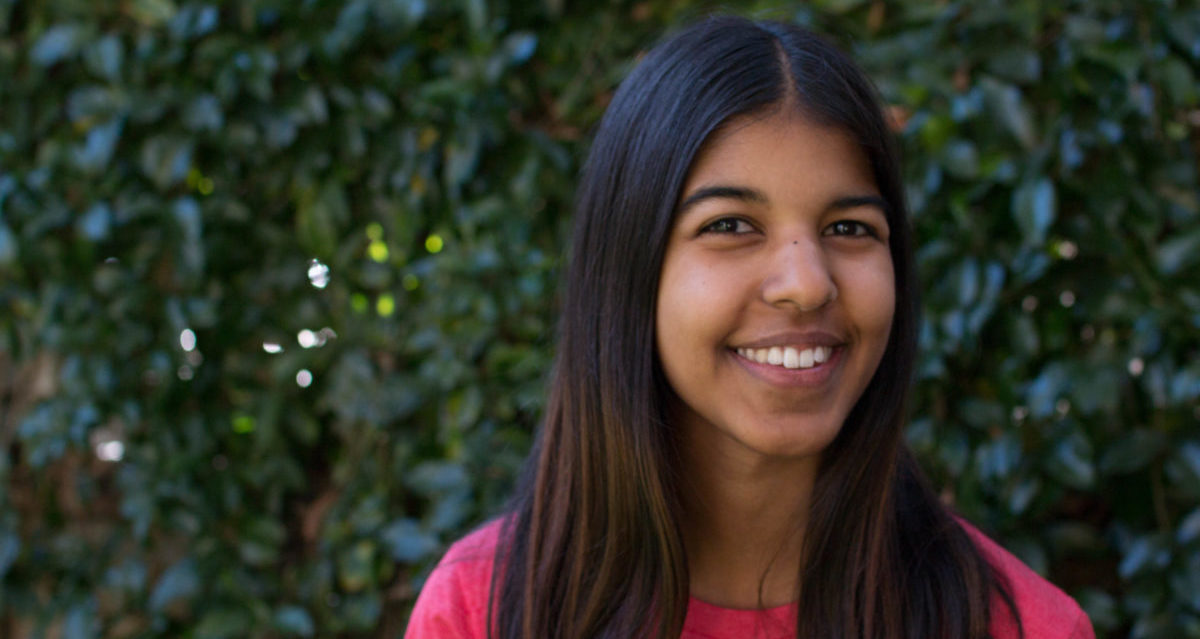
Hidden in Plain Sight: Deconstructing the Mental Health Stigma
By Anika Sinha, ’21
Content Warning: This post contains information related to self harm and mental illness that can be difficult to review. Please make use of campus resources such as Vaden Health Center’s Counseling & Psychological Services and The Bridge Peer Counseling Center to support your safety and well-being.
“I cut myself pretty often. I want to stop but I can’t. How do you stop?” My teaching partner and I stared at this card for longer than usual, then glanced at each other, unsure of how to proceed.
I am a classroom teacher for Health Education for Life, Partnerships for Kids (HELP4Kids). Every Friday, I teach health education to sixth graders at a local middle school. Topics include mental health and wellness, exercise, nutrition, drugs and alcohol, and sleep. Most of my days in the classroom are full of giggles and interrogations about the college experience. Questions can range from: “What classes are you taking?” to “How often do people get drunk?” HELP4Kids lets me escape the Stanford bubble for a brief hour and immerse myself in the colorful world of a middle school classroom. Regardless of my mood on campus, I trust the kids to bring a smile to my face… but this is not always the reality.
At the end of every class, we hand out notecards to the students, so they can ask anonymously any questions they may be uncomfortable to ask in front of the class. The topics we discuss can be quite sensitive and personal, so we want to give space for deeper discussions. Some of the notecards are random sketches pulled out of wild 11-year-old imaginations, some are simple “thank you’s,” and some even contain memes. However, the majority include thoughtful comments or questions about the day’s lesson.
The day we taught a lesson about mental health, I knew we would receive some sensitive questions. But I was still stunned and unprepared to find out that one of my students was struggling so deeply. This indicated my own naiveté. How could someone so young be afflicted to the point of hurting themselves? I thought. After reflecting for a while, I realized that this very mindset was part of the problem. Instead of marveling at how problems like this could even exist, I needed to consider the underlying systemic issues perpetuating my surprise. This child had obviously been hiding this issue. Without the notecards we passed out, they would not have had a platform to speak up. Their reluctance to ask for help ultimately boils down to the stigma attached to mental health issues, a problem that ravages our society.
After reading the notecard, my co-teacher and I reached out to the classroom teacher and school nurse immediately to address the situation. They informed us that they knew the student who wrote the note, and would follow up imminently to ensure they received proper care.
Experiences like this one have shown me that reducing stigma around mental illness is of paramount importance, especially when it comes to adolescents. More notecards from the students in HELP4Kids revealed similar themes, and those were just from the ones who were brave enough to speak up.
I know I am just barely scratching the surface of this issue, but I am doing what I can to reduce this stigma on campus. As a residential assistant and co-president of Stanford Mental Health Outreach, I have been committed to normalizing conversations about mental illness through speaker panels, mental health short films, and fostering vulnerability with my residents. The more these conversations occur, the more students will be able to admit to themselves and to others that they are struggling. This is the first step toward healthily managing life with a mental illness.
My experiences are teaching me that mental illness is relentless: nobody—no matter their age, gender, career, income, education—is given a free pass. If someone seems too young or too accomplished to be battling with it internally, I need to think again. To combat stigma, we need to foster platforms where people can speak openly about their struggles, without fear of judgement… and, most importantly, with the promise of support.

Anika Sinha, ’21, is majoring in human biology with a minor in psychology. In addition to working with youth through HELP4Kids and Peer Health Exchange, Anika is involved in Student Clinical Opportunities for Premedical Experience (SCOPE) and Stanford Mental Health Outreach (SMHO). You can find Anika at Branner Hall as a resident assistant, or at the Haas Center for Public Service, where she serves as a Cardinal Service Peer Advisor.
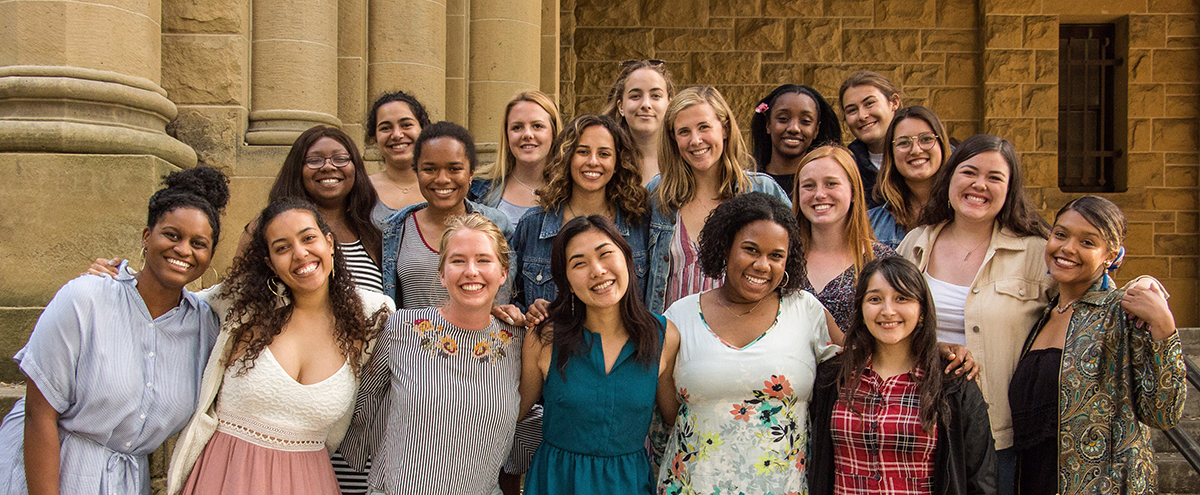
Reflecting on Four Years of Cardinal Service
By Callan Showers, ’19
The Cardinal Service initiative began my freshman year, in the fall of 2015. I am so thankful I made a lasting service commitment right away, by joining a Cardinal Commitment organization called Women and Youth Supporting Each Other (WYSE).
The Stanford women in WYSE facilitate weekly mentorship sessions for middle school girls in East Palo Alto and discuss topics like puberty, women’s empowerment, race and discrimination, and sexual health.
I was persuaded to apply because it seemed like a way for me to expand my sense of community and purpose at and around Stanford. This couldn’t have been truer. Engaging with the East Palo Alto community and its middle schoolers through WYSE has taught me innumerable lessons about cultural humility, community action, education justice, and leadership.
I also had the chance to engage with the broader Bay Area through the Cardinal Course, From Gold Rush to Google Bus: History of San Francisco. We worked with a community partner to identify little-known stories about the city’s history and write articles for an online historical database. I got to nurture intellectual interests through experiences such as digging through archives in the San Francisco Public Library, while also contributing to a community-based project with lasting impact. It also helped me realize that you don’t have to be from a place to help shape its history.
While these experiences connected me to parts of the local area, Cardinal Service programs also helped me serve in the place I have always called home: Minnesota.
The summer after my sophomore year, I received the Advancing Gender Equity Fellowship from the Haas Center and Women’s Community Center to work as a legal intern at Gender Justice, a public interest law firm in St. Paul. Gender Justice represents clients who have experienced gender discrimination or sexual harassment, and I got an inside look into legal proceedings such as depositions, while also getting the chance to draft policy advocacy memos and see the inner workings of a nonprofit.
This Cardinal Quarter inspired me to pursue public interest law because of how well it fit my skills and my desire to make change. I am pursuing a two-year position as a paralegal at a civil rights law firm in Washington, D.C. I truly believe without the values of community-engaged learning experiences and the way I saw my personal and professional values and skills align at Gender Justice, I would be less prepared to enter into this work and my life beyond.
 Callan Showers, ’19, was in the first class at Stanford to experience four years of Cardinal Service. She co-led the student organization Women and Youth Supporting Each Other (WYSE). Callan also completed a Cardinal Quarter with Gender Justice, a nonprofit law firm, and a Cardinal Quarter from the Bill Lane Center for the American West serving with the French cinema house Galatée Films.
Callan Showers, ’19, was in the first class at Stanford to experience four years of Cardinal Service. She co-led the student organization Women and Youth Supporting Each Other (WYSE). Callan also completed a Cardinal Quarter with Gender Justice, a nonprofit law firm, and a Cardinal Quarter from the Bill Lane Center for the American West serving with the French cinema house Galatée Films.
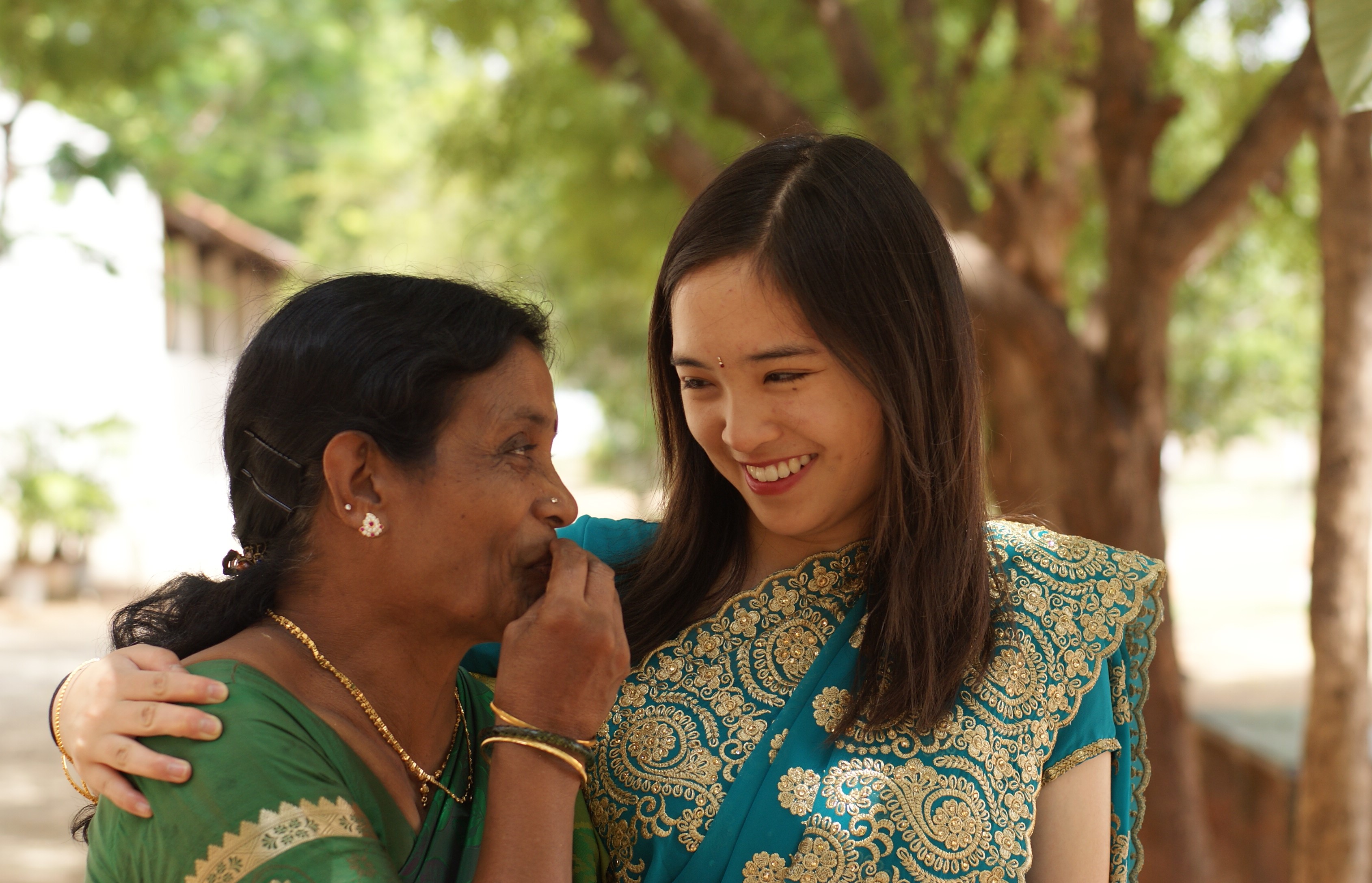
Updating My Views: On Science Education and Life in Rural India
By Catherine Wang, ’21
Last summer I had the extraordinary opportunity to spend eight weeks teaching at the AGN School in Tamil Nadu, India. As a Cardinal Quarter fellow with Project Dosti, I taught science for middle and high school students and helped implement an interdisciplinary curriculum that emphasized the excitement of real-world problem-solving. My experience was a reminder of how much I love biology, as I had found it difficult to maintain the same enthusiasm for the subject during the cyclical grind of the school year. But in Tamil Nadu, I ended each day with my body covered in chalk dust, my voice hoarse, and my smile too big for my face.
I’ve always been passionate about STEM education, so I think a lot about how science can be taught better and made more accessible, especially biology. When I arrived, I saw that the students’ textbooks were outdated and did not emphasize real-world applications of the basic sciences. In response, I designed new lessons that introduced cutting-edge biology research, some of which originated at Stanford. One of my favorite lessons was about how CRISPR gene-editing technology could potentially be used to cure many of the diseases that the students already knew. Because they had only memorized a list of genetic disorders, they had never seen the impact of such diseases and the ways that basic biological mechanisms could be harnessed to treat them. I taught different versions of this material to students from 8th to 11th grade, scaling the level of detail accordingly. No matter what age the students were, their minds were blown.
When I reflect on my experience in Tamil Nadu, I realize that just because communication is efficient and hot water comes out of the tap doesn’t mean American culture is superior. As I saw it, the culture in the rural village where I lived was a lot less isolating and more communal than what I was used to in the United States. This was apparent in the language—kids called each other “brother” and “sister,” and teachers called each other “sister” and “mother.” There were also fewer formalities in everyday speech, so people would ask me deeply personal questions that allowed them to get to know me better, more immediately.
I spent two nights staying in an art teacher’s rooftop home. She was widowed and by all definitions extremely poor, but her life was full of color and simple joy. Whereas I had accepted a relatively nomadic life in the United States, families in the village had lived there for many generations. My art teacher knew her neighbors well and children from the village poked their heads into her home every few hours.
My time in India made me reevaluate my identity as an American and as a Stanford student. I began to measure myself in more mundane but important ways—as a friend, creator, and teacher, rather than a three-point-something GPA student destined to jump through progressively more demanding academic hoops. Though I went there to provide a more modern education, I learned something that neither the latest scientific nor technological advancements could ever teach: a view of life that values community, hospitality, and human connection. I hope to take this with me on all my future adventures.
Catherine Wang is a pre-med student studying biology and art practice. Through Cardinal Quarter, Catherine joined five other Stanford students to serve in India with Project Dosti. She is from Lexington, Massachusetts.

Chemistry with Kusuma
By Elizabeth Wallace, ’18 (English, French Literature)
The last place I expected to use my evolving knowledge of organic chemistry was at an orphanage in rural India. Yet there I was, cross-legged on the floor of the Aarti Home dining hall trying to recall the difference between an alkene and an alkyne with a young woman named Kusuma.
“Akka, sister, it goes like this,” she tells me, bending over to draw the reaction arrows on my paper.
Kusuma was in her first organic chemistry class, but her dream is to go on to get her PhD. Her spunk and spirit inspire me. She is witty, sharp, and not afraid to speak her mind.
Every girl I met at the Aarti Home in Kadapa, India, was as dedicated and determined as Kusuma. Aarti Home was set up in 1992 by the incredible vision of Sandhya Puchalapalli, who determined that girls in her community should have a safe place to live and be educated, even if their families could not afford to provide it.
I came to Aarti in the summer of 2017, a Stanford intern eager to learn more about the organization and help in anyway I could. What I found was a center of female empowerment, a cradle of love and support where brilliant and strong women are molded. Aarti gave me hope that the future is undoubtedly female and because of that, indisputably bright.
Elizabeth is part of the 2017-18 cohort of the Public Service Honor Society, a leadership program for seniors run by the Haas Center.
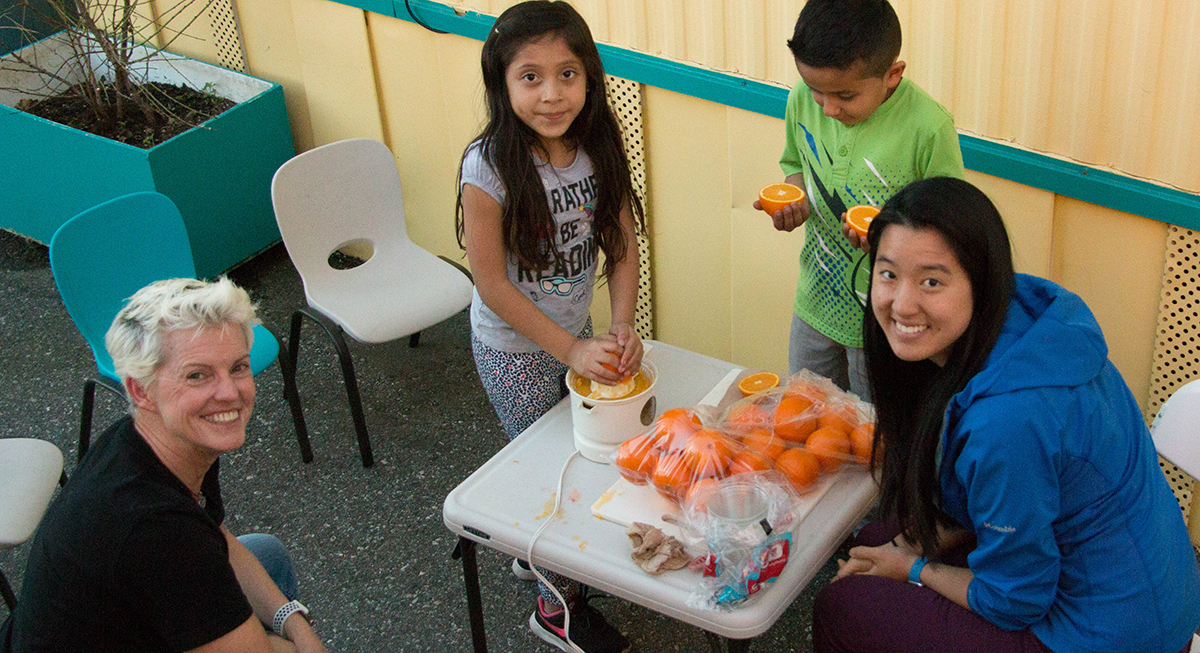
Bridging Palo Alto’s education gap
By Ezra Yoseph, ’21 (biology/neurobiology)
Following years of negotiations between its previous owner and Santa Clara County, Buena Vista Mobile Park survives as one of the few remaining options for affordable housing in Palo Alto. Unfortunately, the 400+ residents continue to be stricken by the harsh ramifications of educational inequity. Noticing that there were several academic outreach programs offered to secondary students but a lack of programs servicing elementary school students, Dr. Deborah Farrington launched Buena Vista’s first homework club for younger children and enlisted Stanford University students as supporters and tutors.

My first quarter with the Buena Vista Homework Club (BVHC), through a Cardinal Course, Well-Being for Immigrant Children and Youth, instilled in me the importance of getting to know students and making time for conversation in between tutoring sessions. Understanding the backgrounds my students came from allowed me to come up with nuanced and effective goals for each meeting. Simply put, access to educational resources at home is far from uniform, which inevitably leads to an immense number of low-income students getting left behind very early on. As we look forward to mitigating Palo Alto’s education gap, we must sustain and promote programs like BVHC that support learning at a young age as opposed to waiting until it’s too late.
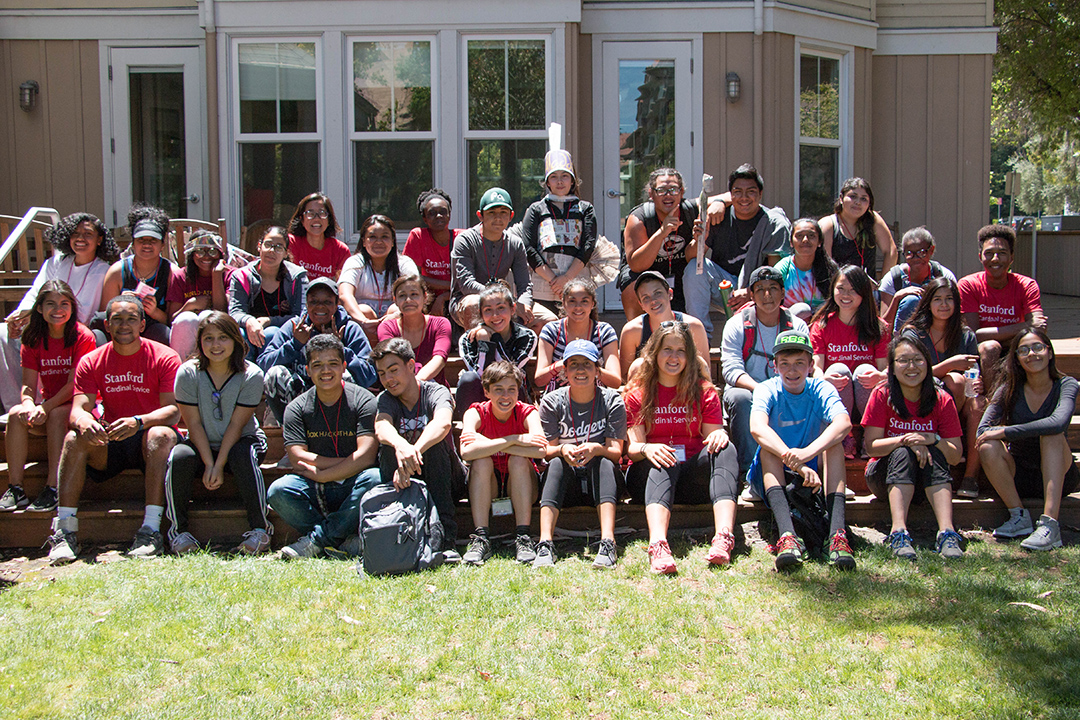
Summer Saturdays at Stanford
By Sophia Kim, program director for the High School Support Initiative at the Haas Center for Public Service
 The High School Support Initiative ran Summer Saturdays at Stanford, a new summer program for youth from the high schools that we are partnered with: Gunn, Menlo-Atherton, and Sequoia high schools. The youth served in the program are from marginalized communities locally and were identified by our partners to apply for the program. All together 27 youth participated with the support of 10 Stanford student volunteers. It was a wonderful four Saturdays of workshops on such topics as resume building and college preparation along with field trips kayaking in the Bay, to SF State, and to Huddart Park in Woodside.
The High School Support Initiative ran Summer Saturdays at Stanford, a new summer program for youth from the high schools that we are partnered with: Gunn, Menlo-Atherton, and Sequoia high schools. The youth served in the program are from marginalized communities locally and were identified by our partners to apply for the program. All together 27 youth participated with the support of 10 Stanford student volunteers. It was a wonderful four Saturdays of workshops on such topics as resume building and college preparation along with field trips kayaking in the Bay, to SF State, and to Huddart Park in Woodside.
Participants had positive feedback about the program, saying they learned a lot and valued getting to work with the Stanford students. We are planning follow up sessions during the school year to bring the youth and volunteers back together in more activities.
 Here are a few quotes from youth participants:
Here are a few quotes from youth participants:
- I really enjoyed this program, every single minute of it. This went by really fast but it definitely made this my favorite summer.
- I wanted to say this was an amazing opportunity to get to know the Stanford students! You guys are the best, you guys are truly amazing! Best wishes to the volunteers.
- I really appreciate what you guys did for us, paying for our food and providing us with your time. Thank you so much! I learned a lot!
- It was really good because it taught us a lot.
And a few quotes from Stanford student volunteers:
- I love doing volunteer work with children, outside of simply tutoring (which is important too!) Between this program and Kesem, I’ve found two great communities full of love and adventure, and have had one of the best summers.
- I didn’t realize how impactful a 4 weekend program could be. It was good that we were reasonable with how much could be done, but I also learned not to underestimate the importance of exposure to topics in college access. On the last day, I was surprised with how much the students took away from the program, especially during their mini open-mic speeches.
- I would wake up each Saturday dreading the early morning only to fall in love with the day.
